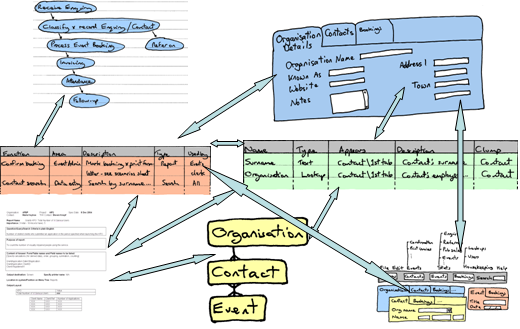Why Paperbuild?
Why PaperBuild?
Everything is built twice ...once conceptually and once physically. The PaperBuild is the conceptual stage. And if you miss it, you end up having to repeat the physical stage - i.e. you build twice and pay for it twice, and that’s once too much.
Nobody knows what they want. For sure, everyone has a vague notion of the system, but when it comes to the fine detail, the reality of how this application will be used, nobody has actually considered it fully. The PaperBuild is a guarantee that a group of people know what they want, have thought the thing through, and are confident it makes sense.
Time works. Part of the PaperBuilding idea is to split the exercise up into a series of sessions one week apart. When you leave a session, some of the ideas will stay with you and rattle around in your head, maturing, leading to a more fully baked expression at the next session. When you come to a second session separated by a week, you’re in a different frame of mind, you bring a slightly different perspective. This helps give the PaperBuild a more rounded aspect.

Computers slow things down. Pencils and paper! Why not do it on computers? If members of the group have sight or hearing impairment, or the group is spread around the country, then computers can be the answer. Otherwise computers tend to lead to one person inputting and everyone else watching– they disenfranchise the group. If everyone has a pencil and paper and a specific job, then they all have to engage and be part of the team. As the workshops progress, the participants take ownership and gain a deeper understanding of the project. They become advocates of the project. It’s also more fun!
We don’t understand each other. Take the word ‘project’ – nearly every organisation has them, but they seem to have a different meaning in each. Even in the same organisation, even in the same job, we carry around different meanings for jargon terms. PaperBuilding spits this out into pictures and simple definitions. It allows members of the same organisation to ask the crucial ‘stupid questions’ that reveal and overcome the common misunderstandings and make for a coherent system.
“No time to talk, no time to PaperBuild, got to press on!”. We sometimes come across organisations who have no time to explain what they want. They expect to be able to say a few words and for their software providers to infer from that everything that’s in their heads. It’s the best way to guarantee a bad outcome!